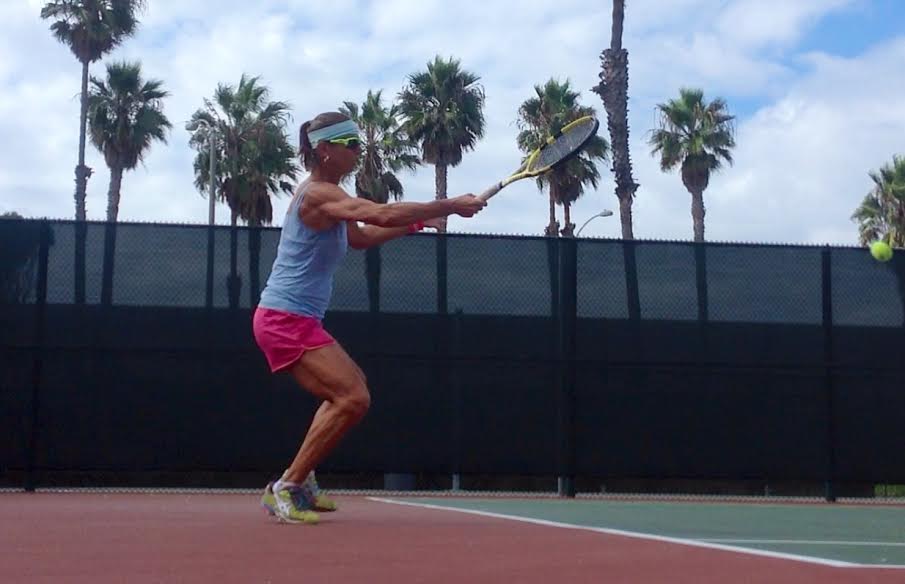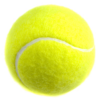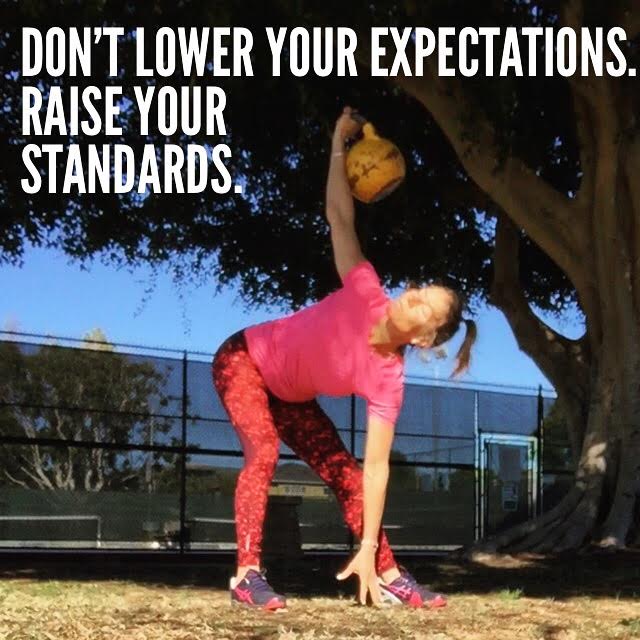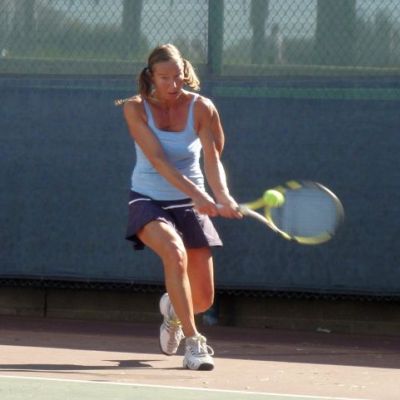Every tennis player wishes to hit harder and with more control. To improve your tennis swing power and control at the same time is not that simple. Sometimes the player just hits hard… and harder… and the hardest… but “muscling” the ball too much. There is no looseness in his swing. The more tightness, the less control.
So you may be hitting harder, but you have no control over the ball that often flies who knows where.
Of course, you need a good technique, that’s a good base for your improvement. On the fitness side, if you develop a strong core and strong hips, you are on a good way to improve your swing power, while retaining control. In the past articles that you can find on this website, you learn how to do planks, side planks, twist planks or planks with lifting the limbs. They all help your core strength. You need to pay attention to hip health and power as well. Windmills and squats improve your hip and core strength.
Focus on all these basic exercises and see the magic slowly happen.
But there is more fun stuff you can do. Hoang Pham, a tennis player and writer for the WeckMethod team wrote a nice article about 3 great exercise to additionally improve your tennis swing and control. Upon mutual agreement with the WeckMethod Team, I am reposting their article for you to read. It is good information that you and your tennis swing power can benefit from. This article is originally posted on www.weckmethod.com if you are interested to see more of their stuff.

3 TENNIS EXERCISES VITAL TO IMPROVE SWING POWER & CONTROL
by Hoang Pham
When I was first introduced to tennis, I considered myself a physically strong and active student athlete. My instinct was telling me that I would be able to aggressively strike and score on my opponents left and right using pure strength. Needless to say, I was wrong. The majority of my tennis play time was spent chasing tennis balls that went soaring over the fence and bouncing on to neighboring courts due to my out of control “power swinging.” I soon realized the hard truth that tennis is not only about hitting the ball with full arm strength.
After countless hours of practice, training, and competitive play I have learned 3 key elements that are essential in becoming an effective, powerful and controlled tennis player, regardless of your playing style.
1. EXPLOSIVE LEG POWER
Think Agility. Think Sprinting. Tennis players spend most of their time racing towards the ball, shifting angles and changing directions quite frequently. Being able to effectively harness this directional force within a short period of time will give you the control needed to produce a powerful and precise stroke . Remember that power comes from the ground up, not the other way around.
A quick and easy agility drill for tennis session is called Tennis Court Suicides:
Step 1 – Start at the baseline, right next to the end of the left doubles line.
Step 2 – With the racquet in a neutral position in your hands, sprint towards the net in a straight line, coming to a hard stop right before reaching the net.
Step 3 – As soon as you stop, sidestep as quickly as possible to the center line and come to a hard stop upon hitting the line.
Step 4 – Backpedal to the center of the court and then transition into another sprint towards the net.
Step 5– Side step over to the right doubles line and backpedal from the net all the way to the baseline.
Repeat this going from right-to-left. Try to go as fast as you can while emphasizing the hard stop with each direction change, this will help improve your footwork as well as increase your ability to quickly get into position for recieves.
To develop that initial first step burst of speed, tennis players can use speed training techniques on the BOSU Elite . BOSU Elite Sprinter Squats , for example, will give you an agility training session that is both safe, and effective at building strength from the ground, to your feet, all the way up to your hands.
2. CORE ROTATIONAL STRENGTH
The explosive power gained from agility training will be lost if you aren’t able to transfer it throughout the rest of your body. This is where core strength comes in. The bracing and rotation action of the core will be the “transfer hub” for your body, allowing you to distribute the maximum amount of force into your swings.
During the longer tennis matches, core rotational strength becomes even more important. More strokes means more exhaustion and compensation from the rest of your body. Being able to stabilize your core for quicker open stance ground strokes can provide you with that extra second to catch your breath. In a game where seconds count, that may be a factor in who wins a game.
Rope swings with the RMT Yoke Rope not only work on grip strength, it provides a challenging core strengthening workout that’s beneficial to tennis players and athletes alike.
3. STRONG FOUNDATIONAL SYSTEM
Know the foundational movements of the game…. Seems simple right? But when was the last time you actively practiced tennis fundamental drills? The kind of drills that your first tennis instructor taught you? When you go back to the fundamentals, and take things slow, you may be able to make slight improvements to your style that you weren’t even aware of before. Do something enough times and it becomes ingrained in our muscle memory. But if you aren’t actively training your muscle memory, you could be sabotaging improvements in your game.
To get you started, practice not lifting your back leg off the ground during a groundstroke. You must learn how to stabilize internally and externally rotate or you’ll lose the power transfer. By only using one leg, you’re only using half of our resources. That’s not to say that you should keep it static; using the rotation that occurs when you drive into the ground and pivot on that back leg is essential for maximizing power and stability in your groundstroke. Now that you have the foundation down, you can add things like Non-Dominant Side Training™ to your workout.
Non-dominant side training for tennis will improve any deficiencies you may have on your non-dominant side. This is especially important during weight transfers between your front and back leg. You don’t want your non-dominant leg to hinder your performance if for example; you are forced into a split stance, or dominant leg is not behind your force. Think Gael Monfils; the massive amounts of strength he wields in both sides of his body allow him to pull off his acrobatic performances on clay. Practice exercises that reinforce unity between the left and right sides of your body where both feet are on the ground. Not only will this help with your balance but also your coordination.
So remember, in tennis it’s technique before strength. You can swing the racquet as hard as you want, but there’s no guarantee that it won’t soar over the fence.
Do you want to learn more exercises that you can do outside of the gym to improve your power, strength, flexibility and quickness. Treat yourself for “Tennis Fitness for the Love of it: the Mindful Approach to Fitness for Injury-Free Tennis” available on Amazon.com worldwide.
Spread your love, treat your friend :-)



